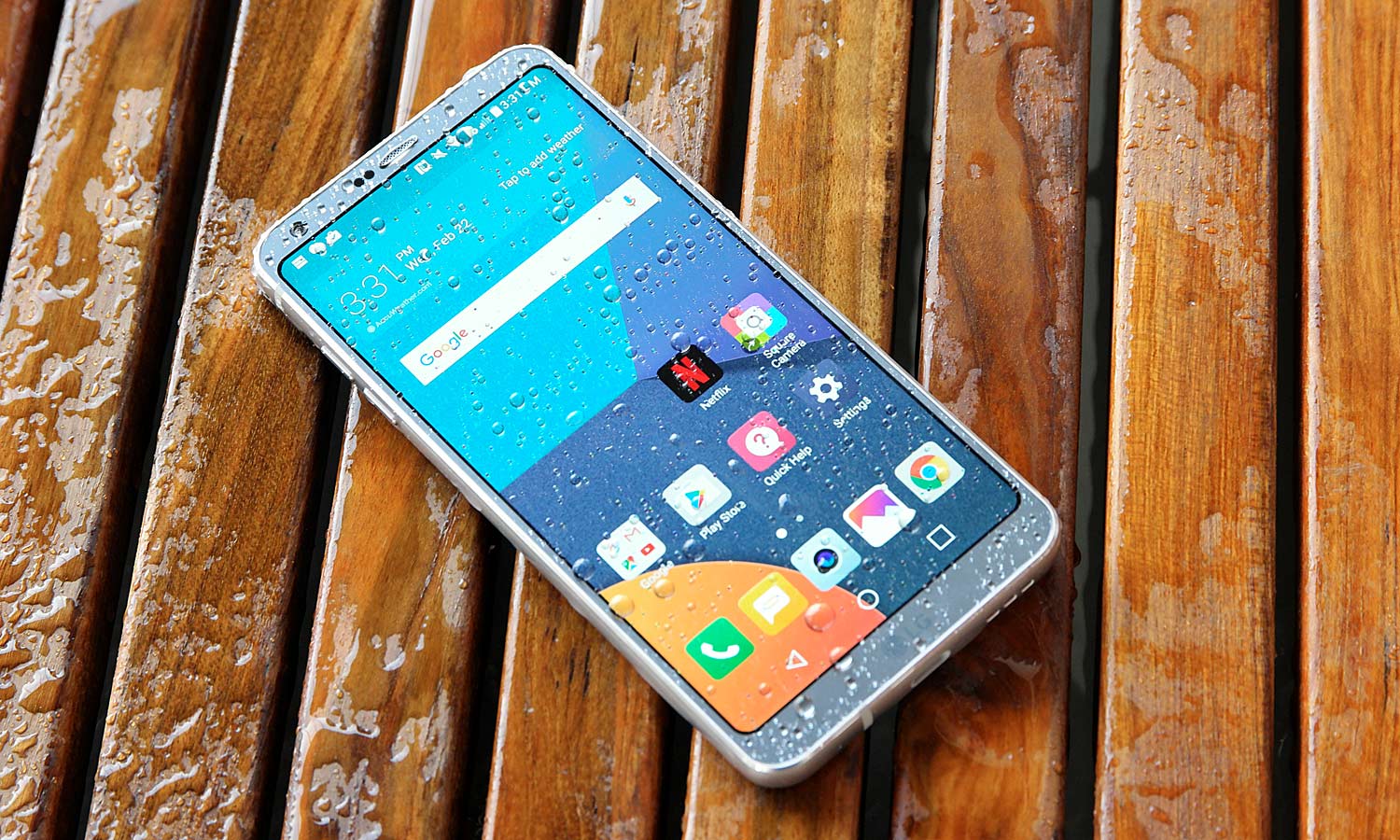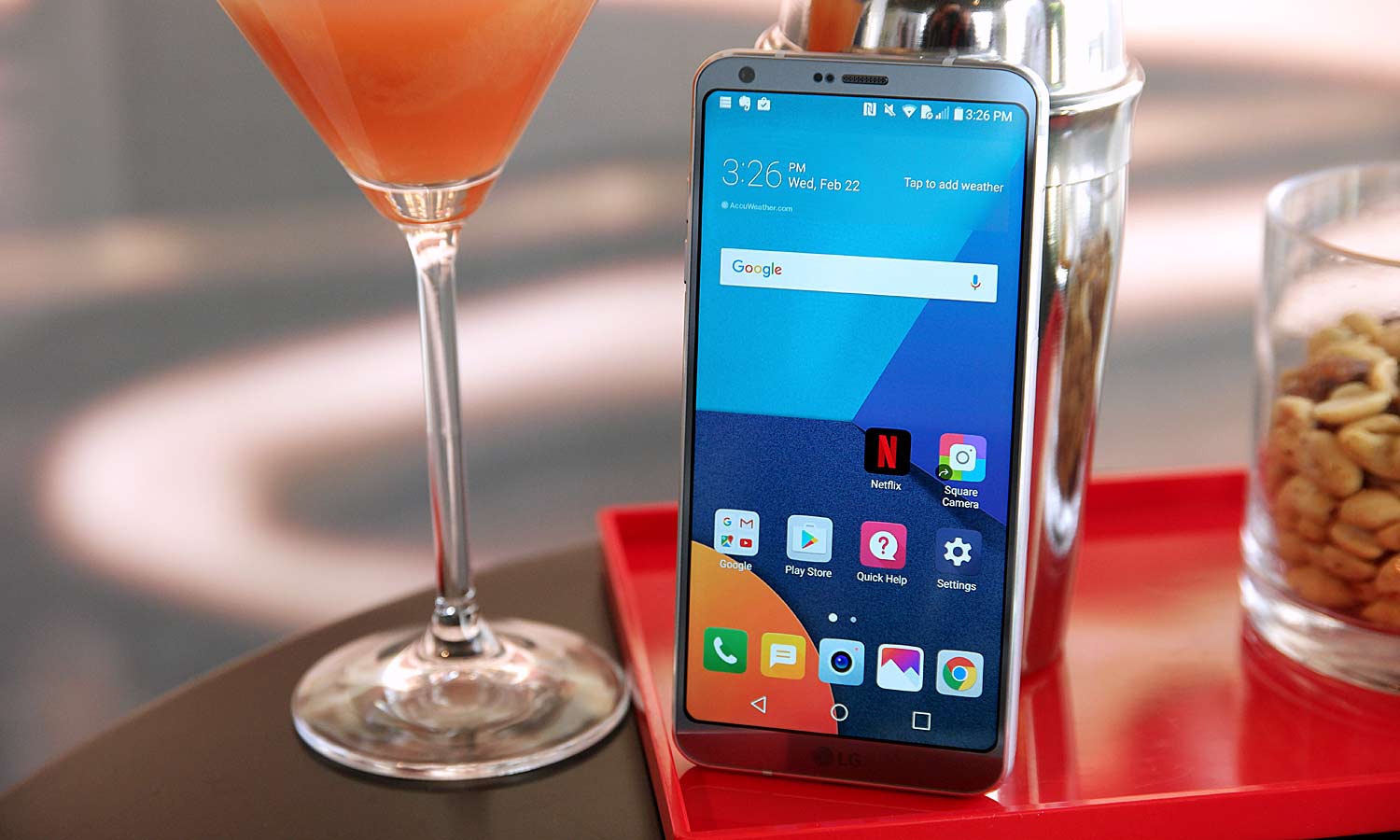LG G6 vs LG V20: How They're Different and What to Get
LG offers two compelling flagships in the sexy G6 and creative pro-friendly V20. Here's how they compare.
The LG G6 is one of the most compelling Android phones of the year, offering a big 5.7-inch widescreen in a compact and sexy design, but it's not the only LG flagship worth considering.
While older, the LG V20 remains a pretty powerful beast, especially for videographers and music lovers, and it has some unique strengths the G6 lacks.

Which phone is the better choice for your needs (and wallet)? Here's a breakdown of the key differences — and our recommendations.
| Row 0 - Cell 0 | LG G6 | LG V20 |
| Price | $650-$720 | $480-$829* |
| Display (Resolution) | 5.7 (2880 x 1440) | 5.7 (2560 x 1440) |
| CPU | Snapdragon 821 | Snapdragon 820 |
| RAM | 4GB | 4GB |
| Storage | 32GB | 64GB |
| microSD | Yes | Yes |
| Rear Camera | Dual 13 MP | 16 MP + 8 MP |
| Front Camera | 5 MP | 5 MP |
| Battery/Removable | 3,200 mAh/No | 3,200 mAh/Yes |
| Size (inches) | 5.9 x 2.8 x 0.31 | 6.3 x 3.1 x 0.3 |
| Weight (ounces) | 5.8 | 6.1 |
* T-Mobile sale price of $480. Normally $769
Design
The LG V20 isn't an ugly phone, but it's nowhere near as fetching as the G6.

The metal design just looks uninspired compared to the glass-and-metal body on the G6. Plus, the G6 is shorter, narrower and lighter, even though it has the same size display as its cousin. That makes the G6 easier to operate with one hand.
The G6 has another advantage over the V20; the former has a water-resistant design, so you can get the G6 wet and even submerge if for up to 30 minutes without worry.

The one benefit of the V20's design is that it has a removable back, which means you can easily replace the battery yourself — helpful if you're using the phone on a prolonged video shoot.
MORE: You Can Get a Free Google Home When You Buy LG G6
Display
This is the killer feature for the LG G6. You get a 5.7-inch screen with a higher resolution than the V20 (2880 x 1440 vs 2560 x 1440). Plus, the 18:9 aspect ratio allows for more immersive widescreen viewing.

It gets even better for the G6, as only it supports HDR and Dolby Vision, which means you can expect to see more colors and better contrast. Both Amazon and Netflix have HDR shows and movies to watch.
If you like quick access to shortcuts, the V20 does offer a unique second screen on top of the primary display, which provides quick access to your favorite apps and other shortcuts.
Cameras
The LG V20 is a solid camera phone. Its main 16-MP rear cam offers a higher resolution, and thus more detail, than phones with 12-MP cams, such as the S7 Edge. In addition, the V20's secondary 12-millimeter 8-MP cam offers superwide 135-degree viewing angles that can capture expansive scenes.

The G6 steps those specs up by offering two rear 13-MP shooters, one of which shoots wide-angle photos (though just at 125 degrees). More important, the image quality is seems better in our early tests. In fact, both the G6 beat both the Google Pixel and the iPhone 7 Plus in two separate camera shoot-outs.
Up front, both the G6 and V20 sports 5-MP camera with a wide field of view, but the V20 has a wider viewing angle of 120 degrees (vs 100 degrees).
Specs and Performance
Understandably, the V20 is a generation behind the G6 when it comes to the processor. The G6 features the Snapdragon 821 chip, compared to the 820 CPU for the V20. Both phones comes with 4GB of RAM.

It's not like the 820 is a slouch, but you should expect better multitasking performance and a smoother gaming and VR experience with the G6.
However, the V20 comes standard with more storage, offering 64GB to the G6's 32GB. Fortunately, you can add more via microSD to both phones.
MORE: 11 Cheap VR Headsets Ranked from Best to Worst
Special Features
Although both the G6 and V20 ship with Android Nougat, the G6 comes out of the box with Google Assistant. The good news is that you should be able to add Google Assistant to the V20 without much trouble.

The V20 is really designed for content creators, as it not only offers a slew of manual video controls but also high-gain microphones, resulting in crystal-clear audio. There's a built-in, 32-bit Hi-Fi Quad DAC, which results in better sound overall for music lovers. Also notable is the secondary display, which we found useful for accessing recently used apps and contextual settings.

Although the G6 is really about getting a widescreen display in a compact design, it has some very good special features. These include the HDR support on the display and water-resistant design.
MORE: Smartphones with the Longest Battery Life
Price and Value
Both the G6 and V20 are available from all of the major carriers. Even though the V20 has been around longer, the pricing is pretty comparable between these two phones.
The best deal as of this writing for the LG V20 is on T-Mobile, which is offering the phone for $480 (usually $769). AT&T sells the V20 for a fairly steep $829, and you can pick it up from Verizon for a much more reasonable $576. Sprint's V20 costs $792. Just keep in mind that the G6 comes with half as much storage as the V20.
MORE: The Best and Worst Phone Carriers
The G6 is priced pretty reasonably for being a newer flagship. It costs $650 at T-Mobile, $672 at Verizon, $708 at Sprint and $720 at AT&T. It gets better. For a limited time, you can get a Google Home for free when you order the G6 before April 30. That's a $129 value.
Bottom Line
The LG V20 has some things going for it compared to the G6. It offers a removable battery, more built-in storage, and you can get it for as low as $480 (from T-Mobile). Plus, we like the secondary front display and high-gain mics for recording video.

However, for most shoppers, the LG G6 is the better bet. You get the same size screen in a more compact design along with HDR support for more colors. We also like that the G6 is water-resistant and that you get sharper dual cameras on the back. Both phones are worth buying, but the G6 has the edge.
Photo Credits: Sam Rutherford for LG G6; Jeremy Lips for V20.
Sign up to get the BEST of Tom's Guide direct to your inbox.
Get instant access to breaking news, the hottest reviews, great deals and helpful tips.
Mark Spoonauer is the global editor in chief of Tom's Guide and has covered technology for over 20 years. In addition to overseeing the direction of Tom's Guide, Mark specializes in covering all things mobile, having reviewed dozens of smartphones and other gadgets. He has spoken at key industry events and appears regularly on TV to discuss the latest trends, including Cheddar, Fox Business and other outlets. Mark was previously editor in chief of Laptop Mag, and his work has appeared in Wired, Popular Science and Inc. Follow him on Twitter at @mspoonauer.
-
Vesten Also the V20 has the rare IR Blaster, not to mention the V20 has the ability to last for years and years to come due to a removable battery. The first thing to fail in a smartphone is the battery, so although pretty and water resistant these sealed phones have a much much shorter shelf life.Reply -
Chris_434 I hope your right! I really like the g6 but its to narrow and cant see getting into a contract with a provider with that phone but it really is nice, hope v20 will last atleast 2 yrsReply -
phprry The v20 is also built to military spec for dropping. That feature, coupled with the chip, camera and removable back made the v20 a no brainier for meReply -
Paulo_16 Removable battery is the deal breaker for me. Also the better audio that they failed to mention.Reply

